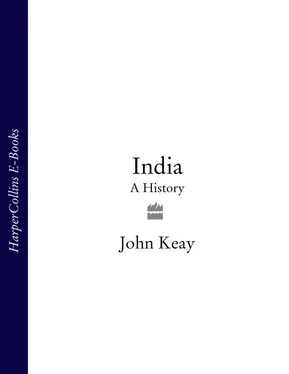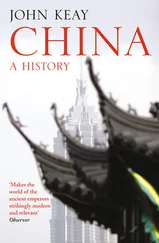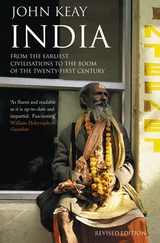I, Kakshivant, obtained also a hundred cows from my master
Who exalted thereby his fame immortal up to heaven.
‘This dismal hymn,’ writes Dr Ghosh, ‘ends with two verses notable only for their extreme obscenity.’ 9In translation the obscurity is more evident than the obscenity but, by substituting sexual terms for words like ‘bliss’ and ‘creation’, it is just possible to grasp the nub of his objection.
O resplendent lord, with brilliant radiance may you be delighted.
May your own bliss be consummated. Your delightful creation,
The holder of your bliss, is as exhilarating as the bliss itself.
For you, the vigour, equally envigorating is the bliss,
O mighty, giver of a thousand pleasures. 10
Later Vedic collections ( Samaveda , Yajurveda and Atharvaveda ) reiterate and supplement such verses from the Rig Veda, but they rarely illuminate them. As for the Brahmanas and Upanisads , the latter explore the mystical and metaphysical meaning of the Vedas and are important for the development of Indian philosophy, but they contain little historical information, while the former, ‘an arid desert of puerile speculation on ritual ceremonies’, again fail to measure up to Dr Ghosh’s exacting standards. Elsewhere he calls them ‘filthy’, ‘repulsive’, ‘of interest only to students of abnormal psychology’ and ‘of sickening prolixity’.
There are also, though, especially in the Rig Veda, some hymns of dazzling lyricism. Most often cited are those dedicated to the delectable Ushas, the goddess of dawn who reveals herself each morning, upright and naked, her body ‘bright from bathing’; or those to Ratri, the spirit of the night, who from the stars that are her eyes keeps watch when men, like birds to roost, go home to rest. Even in excessively literal translations, these pearls of descriptive verse from poetry’s remotest past suggest that there was more to the arya than the earthy obsessions of the stockman and the swagger of the charioteering oppressor. The prerequisites of civilisation – economic surplus, social and functional specialisation, political authority, urbanisation – were still lacking, but already the people of the Vedas had acquired a linguistic mastery of their environment and were beginning to deploy that same remarkable language to explore its logic.
Nowhere is this more apparent than in the conduct and elaboration of those sacrificial rites with which the Vedas are directly concerned. If Vedic translations tend to be literal it is because of the obscurity of the allusions and the language. Both were probably just as obscure to those who first committed these hymns to writing in a number of different recensions, none of which is older than C500 BC. In other words, for at least five hundred years the ten thousand verses of the Rig Veda were learned by heart and handed down by word of mouth. This, however, does not mean that they underwent significant change. Quite the contrary. As the recited accompaniment to the performance of sacrifices, their actual wording, even their intonation and their pronunciation, had to be perfect for the sacrifice to be effective. Conversely, a mangled syllable or an improvised coda could be fatal. Like the magician who forgets the magic formula, the supplicant could then find the sacrifice redounding to his disadvantage and condemning him to the very disaster he was trying to avert.
Such, at least, was the theory inculcated by those who made it their responsibility to shoulder this burden of memorised knowledge and so to serve as intermediaries in the communion of men and gods. Probably even they no longer used the elaborate constructions of Vedic Sanskrit in their everyday speech, and were therefore unsure of the meaning of some of their hymns. Obfuscation was, after all, in their interest; like specialists the world over, they found that the jargon and ritual deemed essential to their arcane science were also well calculated to impress the layman. Originally these intermediaries may have been no more than tribal bards, seers ( risis ) and shamans, and were not necessarily of arya descent. They became more influential possibly as a result of their pastoralist patrons adopting a more settled way of life, which involved grappling with new techniques of cultivation and discovering their vulnerability to the depredations of climate and pestilence. More elaborate sacrifices were needed, and so was a more specialised band of sacrificiants. Thus eventually, and perhaps with popular encouragement, the bards and shamans of old developed into a hereditary class of priests or brahmana (brahmans).
Handling the gods could be even more demanding of arya prowess than handling their enemies. Sacrifices and the elaborate rituals which accompanied them were mandatory and reciprocal. The gods depended on them for their strength; and the arya depended on the strength of their gods. Without effective intervention by their gods, their leaders would fall, their cattle would die, their enemies would triumph and their crops would fail. It was not just a question of propitiating remote but powerful supernaturals. Gods and men were equally engaged in the ticklish business of maintaining a cosmic equilibrium. Each had a legitimate and vital interest in the other’s affairs. A close liaison between the two was essential.
In the Rig Veda brahmans, like the unctuous Kakshivant quoted above, extol the prowess and generosity of their patrons as well as the power and might of their deities. Initially it would seem that it was these patrons, the rajanya or clan leaders, who comprised the elite of arya society, not the brahmans. This situation may have reflected the leadership’s role in warfare and in directing the seasonal migrations. But with the switch to a more settled and secure way of life, the rajanya ’s role was diminished. Increasingly the clan leader looked to the brahman rather than the battlefield for the legitimation of his authority. The risks and the expenditure inherent in combat were replaced by the risks and expenditure inherent in sacrifice. Both could reveal the extent of divine favour enjoyed by the raja and so reinforce his right to rule. The great sacrificial gatherings became exhibitions of conspicuous consumption in which the munificent raja , besides indulging his kinsmen with orgies induced by soma , a hallucinogenic drink, was expected to donate herds of cattle and of horses, buckets of gold and bevies of slave-girls by way of compelling divine favour and rewarding brahmanical support. The gambling with dice so often referred to in Sanskrit literature formed part of the ritual (as well as of the fun) and symbolised the element of risk implicit in the sacrifice itself, as well as affording a further opportunity for divine favour to reveal itself.
Although the arya occasionally practised human sacrifice, the sacrificial offerings mentioned in the Vedas are predominantly of cattle, representing wealth, and of horses, symbolic of power and virility. Both were also associated with fertility. In the aswamedha , or horse sacrifice, a somewhat problematic injunction about the sexual coupling of the sacrificial stallion with the raja ’s bride was meant to symbolise the endowment of his lineage with exceptional strength. The horse, in other words, represented the power of the chief, and would continue to do so in later aswamedha . But these later aswamedha reveal an important transition in the nature of arya authority. As will be seen, their intention became less that of boosting a chief’s leadership credentials in respect of his clansmen and more that of legitimising kingship and territorial sovereignty, notions that were both novel and progressive in a semi-nomadic, clan-based society.
Читать дальше












